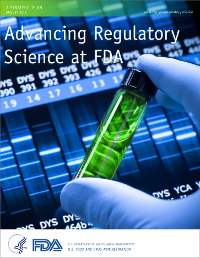
Tasked with the core responsibility of protecting and promoting the health and safety of Americans through enhancing the availability of safe medical products and foods, the U.S. Food and Drug Administration (FDA) recently released a document titled Advancing Regulatory Science at FDA: A Strategic Plan. Central to FDA’s responsibilities is advancing the public health by expediting innovations that make foods safer and medicines and medical devices safer and more effective. In this capacity, the FDA must make decisions based on the best available scientific data, using the best tools and methods available in order to ensure products meet the highest quality standards for consumers. Concurrently, the FDA seeks to foster and advance innovation in the products it regulates, further noting in the document that rapid advances in innovative science have provided new technologies to discover, manufacture, and assess novel medical products, and to improve food safety and quality. As such, the strategic plan was developed to keep pace with these innovations and incorporate new scientific advances within the regulatory process, including developing new tools, standards, and approaches to assess the safety, efficacy, quality, and performance of FDA-regulated products.
The strategic plan identifies eight priority areas in which the FDA will establish or expand its’ engagement in regulatory activities. With respect to the broader implications related to nanotechnology and nanomanufacturing, one priority area, “Support New Approaches to Improve Product Manufacturing and Quality” will be implemented through the development of improved methods and tools to detect and measure the physical structure, chemical properties, and safety of engineered nanomaterials and complex dosage forms (e.g., transdermal patches, inhalation delivery systems, and targeted drug delivery systems etc.) in FDA-regulated products. In another priority area for evaluating innovative emerging technologies, the FDA recognizes the impact made by nanotechnology in revolutionizing medical products, and seeks to better understand how nanomaterials are being used in these products. To facilitate this, the FDA has established Nanotechnology Core Centers to provide critically needed equipment and technical staff to conduct product assessment and safety research in support of regulatory decision making. These centers will facilitate investigations on the safety of products that use nanomaterials, establish methods to assess quality and effectiveness of products that use nanomaterials, and identify standards to be incorporated in the preclinical safety assessment of products that contain nanomaterials. Another priority area relates to informatics, seeking to harness diverse data through information sciences to improve health outcomes. Implementation will consist of incorporating knowledge from FDA regulatory files into a database integrating a broad array of data types to facilitate development of predictive toxicology models and model validation.
While regulatory posturing can be of significant concern to industries struggling for growth, stakeholders are urged to review the FDA Strategic Plan. It provides useful information and details on FDA's approach to keeping abreast of innovations in nanotechnology pertinent to the many products FDA regulates. As such, it provides helpful insights into where FDA is deploying its resources and on which topics it is devoting time and energy. This may provide some indication on where FDA's regulatory resources may be headed, as well as new and unique public resources that may assist in the regulatory cycle. Additionally with the mandate of coordinating activities in nanotechnology between government agencies, it is essential that the FDA coordinate it’s strategic plan with those that are already being established as part of the strategic plan being developed for the National Nanotechnology Initiative (NNI) on Environmental Health and Safety of Nanomaterials. Coordination of these strategic plans with related programs and efforts within the Environmental Protection Agency (EPA), National Institute of Occupational Safety and Health (NIOSH), and the National Cancer Institute (NCI) can make for an efficient approach to improving our understanding of the impact of nanomaterials, as well as proactively develop a federated nanoinformatics effort such that materials data is rapidly and broadly available to all stakeholders involved within the nanotechnology innovation cycle.
